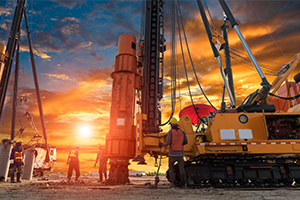Checking, repairing, and servicing of machinery and equipment while maximizing efficiency and keeping costs down is a constant battle for the manufacturing sector, that strives for more agility in a global environment that is fast mutating towards industry 4.0. It’s high time to schedule a service… of asset management practices with AI and prescriptive maintenance.
One of the most recurring questions from industrials we met on our stand at Hannover Messe 2019 was about going from predictive to prescriptive maintenance. What is prescriptive maintenance, the maintenance application of prescriptive analytics, described as the ‘final frontier of analytic capabilities’ by Gartner?
Initially, corrective maintenance meant waiting for machines to break down before replacing them. This rudimentary method fails to address the consequence of equipment damage on other machines, going as far as threatening the whole production. This results in a heightened cost, both in time and capital.
Constraints of asset managers improved with scheduled maintenance, where the planning of repairs is advised for new equipment by the manufacturer (i.e.: change the oil every three months). But this planification doesn’t consider how hard every piece of equipment functioned over its lifecycle and how worn down it is. For used equipment, condition-based maintenance was the usual way to go, with an experienced engineer inspecting the machines and their parts before deciding how to act.
Prescriptive Maintenance: Transforming Asset Management with AI Insights
With the collection of sensor data and AI algorithms that can find patterns and out-of-range parameters by comparing them to historical data, predictive maintenance assesses when a likely breakdown will happen, in real-time.
Predictive maintenance is only a part of the puzzle, and questions linger: What was the cause of the problem? What needs to be done? Why? Bridging predictive maintenance and an automation layer, prescriptive maintenance transforms asset management: “the AI notifies engineers when machines need maintenance, defines what should to be done (such as a new setpoint such as a lower pressure on the equipment to avoid a future failure) and describes the reasoning that went into this recommendation, while identifying the root cause of the problem (e.g.: due to vibrations, this part would need replacement)”, describes Dmitry Borodin, Head of Product & Innovation at Wizata. Checking and analyzing their status, the AI-powered machines call for help and suggest the best course of action to achieve the predefined objectives, such as minimizing assets downtime and maintenance costs.
While analytics applied to maintenance can yield impressive results, this is just the beginning. As companies transit towards Industry 4.0 and pursue their global digital transformation, more qualitative data can be generated, which enhances the precision of all analytics and opens new possibilities. “To improve reliability, adds Dmitry Borodin, you could also record information of machine subparts, perfect a digital twin of the production, and even go as far as integrating the AI with the production planning system”, closing the feedback loop between insights and results.
- Discover how AI solutions for maintenance can be built and deployed on the Wizata platform.
- Find out how the fusion of prescriptive analytics and process control can drive an optimal production.
- Discover how is the manufacturing industry is taking advantage of AI, with innovations that you can test and measure before deployment.
- Are you ready to select and test plans to use AI to enhance your maintenance process? Book your own exploratory workshop.


